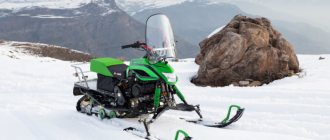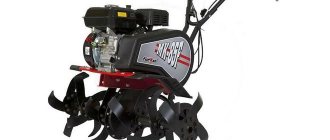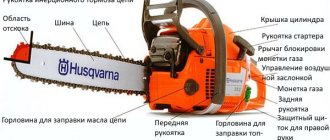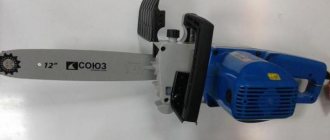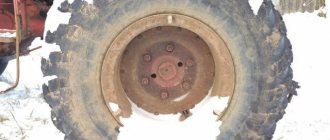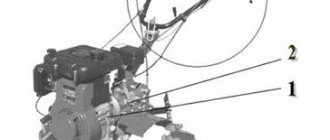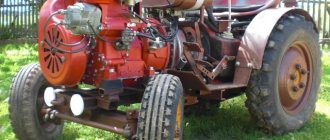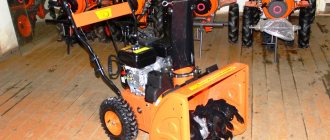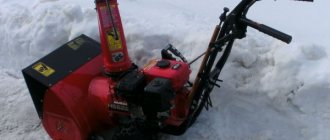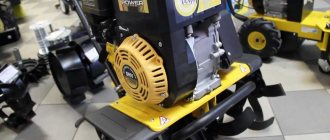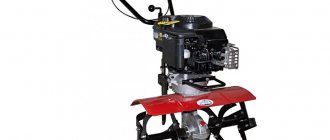"TAIGA" is one of the most common utilitarian and multifunctional snowmobiles in Russia. They started producing it in 1997. With it you can simply, comfortably and reliably get to the desired point, through the least snowy centers of Russia or through the snow-covered tundra.
In this technique, the main thing is not speed, but reliable riding in any harsh places. It gained its trust and reliability after some models were put into service with the Russian army. The Taiga brand has many models in its assortment.
Double: “Varyag”, “TAYGA PATRUL”.
Light single-seat: “RYBINKA”, “TIKSY 250”.
All models with different characteristics, build quality and reliability. And those who know about these snowmobiles first-hand will tell you about all this.
Snowmobile Taiga - owner reviews
“I’ll say right away that the impressions of the Taiga snowmobile are not pleasant. I first met him on a weekend trip with my family and friends. Previously I tried the Buran model and was also not satisfied with its single-lane design. Always falls to the side. Because of this, from the beginning I asked the organizers of the race what kind of snowmobile I would have, and they offered me a two-lane “Taiga”, and I agreed. Due to its powerful engine, it reached speeds of up to 60 km/h. And of course the snowmobile will be stable. And even on the sharpest turns, the runner rises slightly from the surface. A good plus for me is the double seater. "Taiga" is good for an ordinary winter trip through the forest. But my disadvantages to it are the lack of speed, the smell of fuel and poor traction. Well, this is my personal opinion, but for beginners they are not noticeable.”
Grade:
Dmitriy
“If they asked me what I thought about the Taiga,” I would not be able to say anything good, no matter how domestic this device was. In general, my wife's brother bought it and a week later the first breakdown occurred. The next day, we went to the sellers. And they, of course, were shocked. According to them, they have not sold a single defective snowmobile, high-quality product, etc., and this is the first such one to come across. Maybe that's how it is. In order not to repeat the mistake of my relative, be sure to take a ride on your future purchase. This is my story about this snowmobile.” Grade:
Nikolai
“As soon as the first snow fell, my family and I, on the very first weekend, went to actively relax at the ski resort. My husband suggested we go snowmobiling and chose it himself. His choice was "Taiga". The two-seater beast-machine with two runners held very firmly on the snowy road and confidently took turns. But there were some hiccups. “Ride like a breeze”, you can call the speed of this snowmobile 60 km/h. We were so engrossed in driving through the forest that we rode all day. Everyone in the family has great emotions. For winter, active recreation, I recommend it! Grade:
Julia
Model features
To ensure that the reduction of individual operational parameters does not lead to outright compliance with budget modifications, the manufacturer decided to use a number of non-standard solutions. First of all, the front suspension of the Taiga Varyag 550 V snowmobile stands out, which is represented by a telescopic design with a stroke of 150 mm. The basis of the machine is also worthy of attention - the power plant, equipped with two Mikuni system carburetors. Although the RMZ-550 engine itself cannot boast of anything special, the two-channel fuel mixture supply configuration increases its efficiency.
The developers also provided a programmable ignition circuit, with which you can easily control the equipment in different operating modes. In order to improve physical ergonomics, the landing zone of the Taiga Varyag 550 V snowmobile was also optimized. The design features in this part are due to the two-level seat, which has the ability to remove the backrest, and also has handles for the passenger.
Specifications
Let's take as an example the Taiga model. Classic". The two-seater vehicle, with a width of 1020 cm and a length without skis of 2810, has wide tracks (600 mm), low gear and reverse gear, allowing you to easily transport heavy loads. The maximum speed of up to 100 km/h will allow you to feel that very breeze.
- Dry weight 265.
- Engine with a volume of 500 cubic meters.
- Two-speed gearbox.
- Fuel tank capacity is 35 liters.
- Recommended fuel is AI-80.
- Pneumohydraulic shock absorbers provide a soft ride.
Repair
To solve problems, take the measures prescribed in the instructions and follow the advice of specialists who encountered the same problem but successfully fixed it.
| Signs | Causes and method of solving the problem |
| Slow acceleration. The discrepancy with the technical parameters is very noticeable after a complete stop. | A) Look at the belt of the VR device. Often wear of this component is the cause of improper operation of the device. Replace the belt if the width is significantly less than the new product, i.e. by three millimeters. B) Check two geometric criteria: distance between pulleys and belt deflection angle. If there is a large bend, or the length between the pulleys is small, then contact the manufacturer (instructions). C) check the quality of the movable disk (MD) of the driven pulley. Replace the disk if it is broken. D) Check the spring tension. |
| It is not possible to accelerate under normal conditions to maximum speed at maximum speed | A) Look at the snowmobile under item one in the table. B) Inspect and adjust the minor pulley tension. |
| The variator greatly underestimates the gear | A) Adjust the spring tension adjustment of the non-main seam. If it is weak, then there is a high probability of a malfunction. B) Inspect the condition of the centrifugal regulator bushings. If there is contamination, then you need to clean the bushings. If broken, replace it. C) Check the backlash of the driven pulley disk, replace the disk elements if the backlash is not working correctly. |
Selecting a snowmobile
They come in different types: Utilitarian, Tourist, Sports, Children's, Mountain. Tourist - designed for a quiet ride through the forest, for example with family. Sports ones, on the contrary, are for those who like great speed and maneuverability. For children, it is already clear that for growing up fans of this type of transport.
Mountain - for driving on bumpy roads and for jumping, springboards and so on. Utilitarian - have ideal characteristics for overcoming deep snow. Long and wide track, low gear. We will tell you about this type of snowmobile, namely the “Taiga” model.
Why the utilitarian “Taiga”?
These snowmobiles, one might say, are “workhorses”, which are loved both by fishermen and hunters, and by residents of those places where it is practically impossible to get through by regular transport. Another important feature is to transport goods.
That's why these cars are equipped with low gear. It also makes you more confident off-road. This device belongs to two-stroke engines. The advantages of such engines are ease of control and ease of repair. These motors are simple, reliable and unpretentious.
Self-assembly
A snowmobile is an excellent option for active winter recreation. But their prices are rising rapidly. If you are deprived of ingenuity and engineering abilities, then it will not be difficult for you to make your own snowmobile. Before you start drawing up drawings, think carefully about what you would construct your equipment from.
The main part of your car is the engine. The best option would be a walk-behind tractor. Why him? First, in the winter, and this rather powerful engine that sits idle in your barn. And when spring comes and the snow melts, he can safely remove the walk-behind tractor and continue to use it for its main purposes. Assembly Needs: Pipe bender, welding, additional parts purchased at the store.
So, let's start assembling. Our device will consist of two main parts: the driven part and the driving part. The driven part is the steering wheel and shock absorbers. Drive frame, drive, power frame. Now we need to determine which parts we will make ourselves and which ones we will buy in the store. You can make the frame yourself from a metal pipe and shape it using a pipe bender. All parts are attached to the frame using a welding machine.
And to the finished frame, we weld a bracket for the engine, steering wheel, skis and seat. Our snowmobile will be tracked, which will allow our vehicle to have strong grip on the road and high maneuverability. We will also make the caterpillar ourselves, having imagination, water pipes and a conveyor belt.
More detailed information in this video:
How to disassemble the gearbox
Before disassembling the device, select the plane of the gearbox from the driven pulley (VS) with the right side, and the plane of the brake disc with the left.
Step by step, follow these steps:
- Take out the dipstick. Remove cover 1 from the gearbox shell by unscrewing screws 16. After that, remove the upper part 13, cuff 12, unscrewing 4 screws (numbered 14).
- Remove the rubberized rings (RK) 11 sealing the axles of three elements: variator, brake and reverse.
- Pull out bar 47 by unscrewing nut 45. Unscrew bushing 53 and remove cable 44 with spring 52.
- Unscrew sleeve 48 with bolt 61.
- Pull out lever 51.
- Partially remove the two axles 60 and 63 and remove the forks 64, 56, having previously installed the ball 57 with the spring 58. Remove the overhead line 60, 63 completely.
- In plugs 40, hole 010 should be drilled completely and the plugs removed from the gearbox shell.
- Remove the cuff 22. Using an aluminum drift, remove the brake overhead line 39 from the gearbox shell with the assembly unit, which is part of the support supporting the brake overhead line 39, from the shell of the box with PSh 5. It is important that this element fits into the left half.
Gears 35, 36, 38, as well as bushing 37 must remain in the gearbox body. Remove PSh 5 from brake shaft 39 using a press.
Using an aluminum drift, remove reverse overhead line 43 until bearing 5 is released from the left side of the gearbox. It is important to understand that the teeth are connected by moving them in a different direction. Rotate the reverse axis (VR) so that tooth 42 MT does not touch the elements of gear block 8 of component 2 at VR. The reverse shaft must come out so that you can remove the left PS 5. Use a puller to get the left PS 5 VL reverse. To remove MT 42 from the reverse axis, you need to remove the ring with spring 41.
Do I need a license and registration for a snowmobile?
Without conditional rights are needed. Snowmobiles are classified as special equipment. To obtain the right to drive this type of transport (as well as an ATV), you need a category A driver's license. This category includes: off-road motor vehicles. This category can be obtained from the age of 16.
The fee for the license is 500 rubles. Snowmobiles must undergo mandatory registration within ten days at Gostekhnadzor, otherwise you will face a fine of 1,000 to 10,000 rubles. The cost of insurance is 23,500. This equipment can only be stopped by Gostekhnadzor employees, but not by traffic police inspectors.
But MTPL insurance is not needed. New snowmobiles that are less than a year old do not need to undergo technical inspection. And the technical inspection was completed by Gostekhnadzor without inspection. But for owners of equipment that is more than a year old, a technical inspection is required once a year. The cost of insurance is 400 rubles. Picture!
Analogues of the Taiga snowmobile
This brand has very few analogues, since “Taiga” conquered the Russian market and became popular due to its rare assembly and unusual characteristics. Yamaha Viking can easily compete with it . The Russian snowmobile, after improvements, has improved suspension, becoming softer and smoother.
With these changes, the Russian brand has moved closer to top European brands. Russian Mechanics has finally started making good, competitive cars. But many users do not agree with this and call domestic cars, in comparison with their European counterparts, our snowmobiles “scrap metal”. It is very difficult to compare Taiga and Yamaha. After all, “Yamaha has conquered almost the entire world market, and “Russian Mechanics” is rarely found abroad.
Another similar competitor is the STELS 800 Wolverine . With a two-cylinder, 4-stroke engine, 800 cc/cm, has 67 horses. There is one drawback - it is very heavy! But at the same time it has excellent traction characteristics, like the Taiga. It consumes 20 liters per 100 km, which is not bad by snowmobile standards.
The track width is 600 mm, the length is almost 4 meters, and this is rare for utilitarian snowmobiles. The track toe height is only 22 mm, which is a disadvantage for driving in deep snow. The windshield, a rather strange shape, after 60 km/h, begins to bend from the air flow, but it is impossible to break it.
Bearing quality check
Check reliability. Install the PSh with its shoulders to the left side, then secure the inner rings of the PSh 31 on the axles with 29 bolts 3. Mount the right bearings 5 of the VL brake and reverse into the gearbox body. Place the gears (35, 36) on axle 39 in advance with the shoulders of element 36 facing recess 35.
Follow these steps:
- Place sleeve 37 on brake shaft 39, moving the gears with the sleeve until the end of the sleeve connects with the end of the brake overhead line.
- Mount the VL 39 brake in the housing half of the gearbox, having previously installed the gear 38 with its shoulders facing the right bearing 5. Do not insert the VL brake into the bearing 5 in a disassembled form. Insert the assembled shaft 43 into a suitable PS 5 on the right side.
- At the end, install the entire gear 38 on the brake VL 39 with its shoulders in the inner part of the 5 side ring PN and stop the process of installing the brake 39. Place element 2 BP with MT 9 in the body half of the gearbox. In this case, component 8 must be located in its position on the variator axis.
Check that the gears are installed in mesh with each other.
Install the following items:
- ring with spring 65, part 22;
- details 5;
- elements for adjustment 6;
- parts 3 and 4, which lock the variator overhead line;
- rings, rubberized 11;
- cover 13 with element 12.
Install the elements for switching the speed mode and starting reverse movement. The order should be the reverse of dismantling work.
